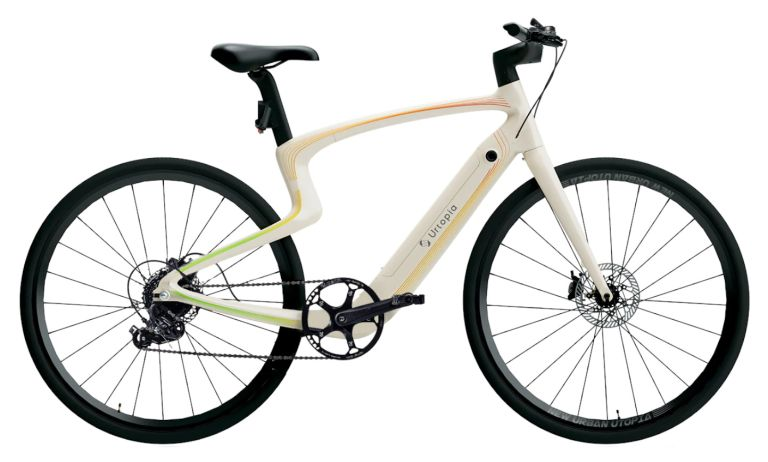The Science Behind E-Bike Batteries: How Far Can You Really Go?

E-bike batteries serve as the lifeblood of electric bicycles, powering their movement and determining their range. As e-bikes gain widespread popularity, the significance of battery range becomes increasingly paramount.
This article delves into the science behind e-bike batteries, exploring their composition, function, and range capabilities.
Table of Contents
Understanding Battery Technology
E-bike batteries mainly rely on lithium-ion technology, which is widely acclaimed for its exceptional energy density and long-lasting durability.
These batteries consist of several key components, including electrolytes, cathodes, and anodes, which collaborate seamlessly to enable the movement of lithium ions during both the charging and discharging phases.
High Energy Density of Lithium-ion Technology
Lithium-ion technology stands out in the realm of battery technology due to its remarkable ability to pack a significant amount of energy into a compact and lightweight design. This high energy density enables e-bike batteries to provide ample power while maintaining a relatively small and manageable size.
Additionally, lithium-ion batteries are known for their longevity, capable of enduring numerous charge cycles without significant degradation in performance.
Role of Electrolytes in Lithium-ion Batteries
Within the lithium-ion battery, electrolytes play a crucial role as the conductive medium through which lithium ions travel between the cathode and anode during the charging and discharging processes.
Cathode and Anode in Lithium-ion Batteries
The cathode, typically made of a lithium-based compound, serves as the positive electrode and receives the lithium ions during charging. Conversely, the anode, usually composed of graphite, acts as the negative electrode and releases lithium ions during discharging.
Charging and Discharging Process of Lithium-ion Batteries
During charging, an electric current causes lithium ions to migrate from the cathode to the anode, where they are stored within the battery’s structure.
When the e-bike is in use and power is required, the process reverses, with lithium ions moving from the anode back to the cathode. This movement generates electrical energy that powers the e-bike’s motor.
This intricate interplay of electrolytes, cathodes, and anodes within lithium-ion batteries is what enables e-bike riders to enjoy extended periods of riding without the need for frequent recharging.
Additionally, the robustness and reliability of lithium-ion technology ensure that e-bike batteries can withstand the rigors of daily use, providing riders with a dependable source of power for their electric bicycles.
Factors Influencing Battery Range
The terrain and riding conditions are crucial factors that significantly influence the range of Urtopia ebike batteries. When tackling uphill climbs, riders may notice increased energy consumption as the motor works harder to overcome gravity.
In contrast, downhill descents present an opportunity for regenerative braking, where the kinetic energy generated during the descent is converted back into electrical energy and stored in the battery for later use.
Furthermore, wind resistance can affect the efficiency of Urtopia ebike batteries, especially when riding against strong headwinds.
Riders may experience higher energy consumption as they pedal against the resistance caused by the wind, reducing the overall range of the battery.
Similarly, the condition of the road surface, such as rough terrain or unpaved trails, can impact energy consumption by causing additional friction and resistance, thereby affecting the battery’s range.
By understanding how terrain and riding conditions influence energy consumption, Urtopia ebike riders can better manage their battery usage and plan their routes accordingly.
Whether navigating challenging uphill climbs or enjoying the exhilarating thrill of downhill descents, Urtopia ebike batteries provide riders with the power and reliability they need to conquer any terrain with confidence.
Real-world Testing and Range Estimation
To accurately assess e-bike battery range, standardized testing methods are employed. Both laboratory and field tests are conducted to evaluate factors like speed, terrain, and usage patterns.
Case studies provide practical insights into the real-world range of different e-bike models, highlighting variations between advertised and actual range.
Future Developments and Innovations
The future of e-bike batteries holds promise for advancements in battery technology. Emerging innovations focus on enhancing energy density and integrating regenerative braking systems to maximize range.
Environmental considerations also drive efforts towards sustainable battery production and disposal practices.
In conclusion, the science of e-bike batteries is multifaceted, encompassing various factors that influence range capabilities.
Understanding these intricacies is crucial for both e-bike riders and manufacturers in optimizing battery performance. With ongoing research and development, the future outlook for e-bike battery technology is bright, offering.





